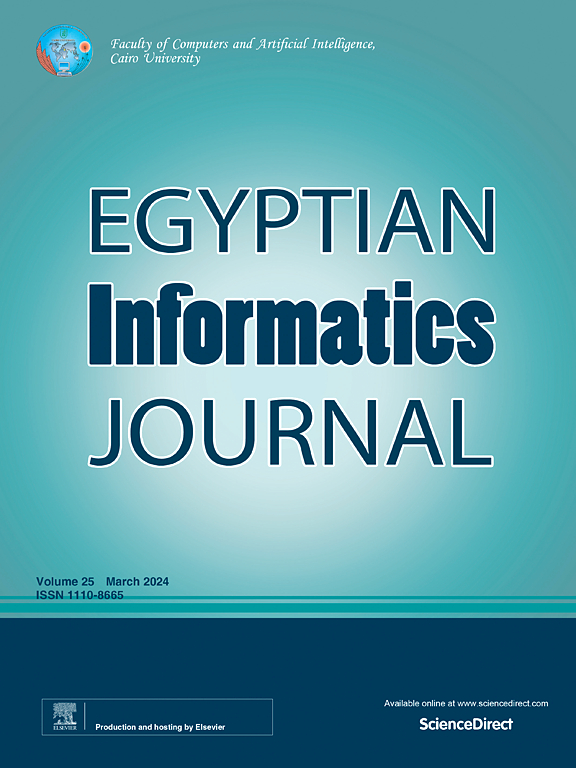利用训练有素的深度学习加解密网络实现端到端医学图像加密系统的安全性
IF 5
3区 计算机科学
Q1 COMPUTER SCIENCE, ARTIFICIAL INTELLIGENCE
引用次数: 0
摘要
医疗物联网(IoMT)将医疗设备与可穿戴设备连接起来,从而提高了医疗保健水平。为了确保 IoMT 上敏感患者数据的安全,加密对于保密、防止篡改、确保真实性和数据传输安全至关重要。深度学习模型错综复杂的神经网络架构为加密过程增加了一层复杂性和非线性,使其具有很强的抗明文攻击能力。具体来说,Cycle_GAN 网络被用作主导学习网络。这项工作建议使用生成对抗网络 Cycle_GAN,对医学图像进行基于深度学习的加密。Cycle_GAN 无需配对训练数据就能改变图像,从而提高质量并保留特征。与传统的图像到图像转换技术不同,Cycle_GAN 不需要具有相应输入输出对的数据集。传统方法通常需要配对数据来学习输入和输出图像之间的映射。配对数据的获取具有挑战性,特别是在医学影像领域,收集和注释数据耗时、费力且昂贵。Cycle_GAN 通过使用非配对数据(输入和输出图像没有明确配对)来克服这一限制。这种方法可确保数据的保密性、真实性和安全传输。Cycle_GAN 由两个主要部分组成:用于修改图像的生成器和用于区分真假图像的鉴别器。此外,还采用了二元交叉熵损失函数来训练网络,以进行精确预测。实验在皮肤癌数据集上进行。结果表明,与其他现代化医学图像加密方法相比,该技术具有高级别的高效性、系统性和一致性。所提出的技术具有多种优势,包括高效的加密和解密以及防止未经授权访问的鲁棒性。本文章由计算机程序翻译,如有差异,请以英文原文为准。
Security of End-to-End medical images encryption system using trained deep learning encryption and decryption network
The Internet of Medical Things (IoMT) links medical devices and wearable, enhancing healthcare. To secure sensitive patient data over the IoMT, encryption is vital to retain confidentiality, prevent tampering, ensure authenticity, and secure data transfer. The intricate neural network architecture of deep learning models adds a layer of complexity and non-linearity to the encryption process, rendering it highly resistant to plaintext attacks. Specifically, the Cycle_GAN network is used as the leading learning network. This work suggests deep learning-based encryption for medical images using Cycle_GAN, a Generative Adversarial Network. Cycle_GAN changes images without paired training data that improves quality and feature preservation. Unlike conventional image-to-image translation techniques, Cycle_GAN doesn’t require a dataset with corresponding input–output pairs. Traditional methods typically needs paired data to learn the mapping between input and output images. Paired data can be challenging to obtain, specifically in medical imaging where gathering and annotating data can be time-consuming, laborious and expensive. The use of Cycle_GAN overwhelms this constraint by using unpaired data, where the input and output images are not explicitly paired. This method ensures confidentiality, authenticity, and secure transfer. Cycle_GAN consists of two major components: a generator used to modify the images, and a discriminator used to distinguish between real and fake images. Further, the Binary-Cross Entropy loss function is employed to train the network for precise predictions. The experiments are carried out on skin cancer datasets. The results demonstrate high-level efficient, systematic and coherent encryption as compared with other modernized medical image encryption methods. The proposed technique offers several benefits, including efficient encryption and decryption and robustness against unauthorized access.
求助全文
通过发布文献求助,成功后即可免费获取论文全文。
去求助
来源期刊

Egyptian Informatics Journal
Decision Sciences-Management Science and Operations Research
CiteScore
11.10
自引率
1.90%
发文量
59
审稿时长
110 days
期刊介绍:
The Egyptian Informatics Journal is published by the Faculty of Computers and Artificial Intelligence, Cairo University. This Journal provides a forum for the state-of-the-art research and development in the fields of computing, including computer sciences, information technologies, information systems, operations research and decision support. Innovative and not-previously-published work in subjects covered by the Journal is encouraged to be submitted, whether from academic, research or commercial sources.
 求助内容:
求助内容: 应助结果提醒方式:
应助结果提醒方式:


